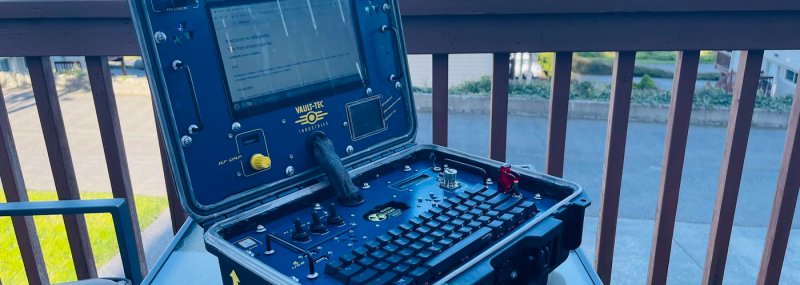There’s always an appeal to a cool-looking computer case or cyberdeck – and with authentic-looking Vault-Tec style, [Eric B] and [kc9psw]’s fallout-themed cyberdeck is no exception.
The case looks like it came straight out of one of the Fallout games and acts the part: while (obviously) not capable of withstanding a direct nuclear bomb impact, it can protect the sensitive electronics inside from the electromagnetic pulse and shockwave that follows – if you keep it closed.
And it’s not just the case that’s cool: This cyberdeck is packed full of goodies like long-range radios, SDRs, ADSB receivers, a Teensy 4.1, and dual Raspberry Pis. But that’s just the hardware! It also comes with gigabytes upon gigabytes of Wikipedia, Wikihow, TED talks, and other information/entertainment, for the less eventful days in the wastelands.
If you, too, would like to have one, fret not! The parts list and design files are public, even though some assembly is required.

















looks ok, but how long this dev work?
Looks very nice!
The link under “parts list” does not work. It probably should go to https://hackaday.io/project/195667/components
Thanks!
Many cyberdeck builds fail to answer a key question: Why is this not a standard laptop form factor? The Fallout theme provides a great answer – this one is what a Vault Dweller on a mission to rebuild civilization would need, or at least what Vault-Tech thought they would need.
I have to wonder what Wikipedia might have looked like in the Fallout universe, though.
AVENGERS, ASSEMBLE!
“Hulk…
Smash!”
Whenever I see the cable management approaches in builds like this, I wonder why nobody has yet designed some sort of 3d printable cable guide that doubles as a hollow sort of stop chain. It wouldn’t even need to fully enclose the cables running between the two halves of the enclosure, it could be open on the back side. Wouldn’t be too difficult to do it out of metal either, a little bit of square tubing or U channel or pipe.
There is a whole class of products that are made for this and they are really nice to use, but I think it is simply the classic problem of just not knowing that all these solutions exist. There are 3d printable versions as well. :)
https://www.igus.ca/info/cable-carriers
Pretty much everyone that bought one of those Ender 3’s back in the day, printed cable guides to upgrade their printer with. See the link that Canuckfire posted. There are tons of 3D printed versions of them for this specific reason. The reason could be that the person didn’t want to use this, or didn’t know it existed.
These cyberdecks in a Pelican fascinate me.
I think I have all the parts needed to build a more rudimentary one, even more than rudimentary, Raspis, temp/humidity, GPS, ADC/DAC…
But…
Life gets in the way,
Would I be satisfied with rudimentary?
Would it end up being Yet Another Orphan Project (YAOP)?
Currently, I’m trying to finish or dismiss stalled projects to declutter both mind and abode.
Kudos to the builder!
Would be nice to have an x86 PC in there too. After the apocalypse you may desperately need to get some legacy piece of exe software running, Imagine that re-starting the one surviving production line which makes the transistors you need to bootstrap an electronics industry is reliant on some barely-documented little utility supposed to run on XP and untouched, and unmaintained, since a 2002 release… So having an x86 PC in this deck would let you run it under Wine on Linux, or if that fails and your x86 thing is capable enough to have hyperV capability, spin up a VM of Windows under which the software could be run.
Store a x86 laptop in a large enough ESD bag.
Definitely scores high on the TSA need-to-know more cause it’s shielded. Cool factor save the cabling but can it fly? I’d use a piece of smooth flexible hose or tube anchored at the top with a little sil-glide on all the wires inside.
For some reason I picture it next to a bunch of high-powered rifles and cans of chili in a survivalist’s shack.
Now it needs a way to get power from fallout debris.